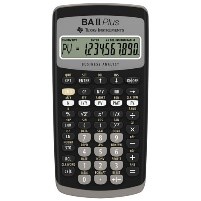4.8 Equivalent and Effective Rates
Interest rates are EQUIVALENT if they provide the same amount of interest on any loan. Consider the two rates:
- 20.5% compounded semi-annually.
- 20% compounded quarterly.
If you take any principal and any length of time, you will find that the two rates always result in exactly the same future value – hence the same interest. This is because they are related by the algebraic expression:
To check the equivalence, consider the following example.
[latex]\left(1+\frac{0.205}{2}\right)^2 = \left(1+\frac{0.20}{4}\right)^4[/latex]
Example 4.8.1
Suppose $50,000 is invested for seven years at the interest rates noted above. Find the future value of the $50,000 for each interest rate.
You have:

Key Takeaway
For rate a: 20.5% compounded semi-annually
- n = 7×2 = 14 half-years
- I = [latex]\frac{0.0205}{2}=10.25%[/latex]
- PV =$50,0000
- FV = ?
Answer: $196,006.46 for rate b
That exactly the same future value is obtained for both rates bears out the claim that the rates are equivalent. In fact, if two rates produce
the same result for any (non-zero) principal and time, then the rates will do so for any values. Hence they are equivalent.
You can use calculator functions to find equivalent rates fairly easily, but first we will use the Future Value formula. You can use any size of investment and any length of time, but to illustrate this in the next example, $1 for one year is used.
Example 4.8.2
Suppose you are given the 20% compounded quarterly rate mentioned above and are asked to find the equivalent rate compounded
semi-annually. You are given:

- n = 1× 4 = 4
- [latex]i = \frac{0.20}{4} = 0.05[/latex]
- PV = $1
- FV = ?
Using the Future Value Formula, we have;
[latex]FV = PV(1+i)^n = $1(1.05)^4 = $1.21550625[/latex]
(Leave this answer in the calculator.)
For the new rate, the only thing that will be different (aside from i) is that it is to be compounded only twice in the year.
So we have
- n = 1× 2 =2
- i = ?
- PV = $1
- FV = $1.21550625
Using the Future Value Formula, we have;
[latex]\begin{align*} PV(1+i)^n &= FV\\ $1(1+i)^2 &= $1.21550625\\ (1+i)^2 &= \frac{$1.21550625}{$1}\\ 1+ i &= \sqrt{$1.21550625} = 1.1025\\ i&= 1.1025-1\\ &=0.1025\\ \end{align*}[/latex]
So the nominal rate would be j2 = 10.25% × 2 = 20.5%.
Effective Rates
The equivalent rate compounded annually for a given compound interest rate.
Compound-interest rates are compared by finding for each rate the equivalent rate compounded annually. For a given compound-interest rate, the equivalent rate compounded annually is called its effective rate.

Example 4.8.3
Find Effective rates for the following:
a. 20.5% compounded semi-annually: j2 = 0.205 so i = 0.1025
[latex]$1(1.1025)^2 = $1.21550625[/latex]
To find the effective rate, we can just evaluate the Future Value equation for n = 1 year:
[latex]$1(1+i)^1 = $1.21550625[/latex]
This is trivial to solve: j1 = i = 21.550625%. In fact, the interest earned on $1 invested for a year is the equivalent rate!
b. 20% compounded quarterly.

n = 1 × 4 quarters, i = 20 ÷ 4 = 5%, PV = $1, FV =?
[latex]$1(1.05)^4 = $1.21550625[/latex]
So we can see that the effective rate is also j1 = 21.550625%. You can see, then, that each rate was equivalent to 21.550625% compounded annually – which also shows that they were equivalent, since they were both equivalent to the same effective rate.
Effective Rates with the BAII Plus
Example 4.8.4
 A bank offers a certificate that pays a nominal interest rate of 15% with quarterly compounding. What is the annual effective interest rate?
A bank offers a certificate that pays a nominal interest rate of 15% with quarterly compounding. What is the annual effective interest rate?
| Step | To | Press | Display |
| 1 | Select Interest Conversion worksheet | [2ND] [ICONV] | NOM = 0 |
| 2 | Enter nominal interest rate, NOM = 15 | [1][5][ENTER] | NOM = 15 |
| 3 | Enter number of compounding periods per year, C/Y = 4 | [↓] [4] [ENTER] | C/Y = 4 |
| 4 | Compute annual effective rate, EFF | [↓][CPT] | EFF = 15.8650415 |
Example 4.8.5
Try the following: ↓
Find the interest rate, compounded quarterly, that is equivalent to 15% compounded monthly.
[2ND][ICONV]
NOM = 15 [ENTER]
↑C/Y = 12 [ENTER]
↑EFF = [CPT] 16.07545177
↓C/Y = 4 [ENTER]
↓NOM = [CPT] 15.18828125
Thus, the following three rates are all equivalent:
j12 = 15% ⇔ j1=16.07545177% ⇔ j4= 15.18828125%
Your Own Notes
- Are there any notes you want to take from this section? Is there anything you’d like to copy and paste below?
- These notes are for you only (they will not be stored anywhere)
- Make sure to download them at the end to use as a reference
This is a mathematical term, meaning that two things are the same in the ways we want them to. In the case of interest rates, two rates are equivalent if an investment at each rate gives the same Future Value after one year.
The equivalent rate compunded annually

